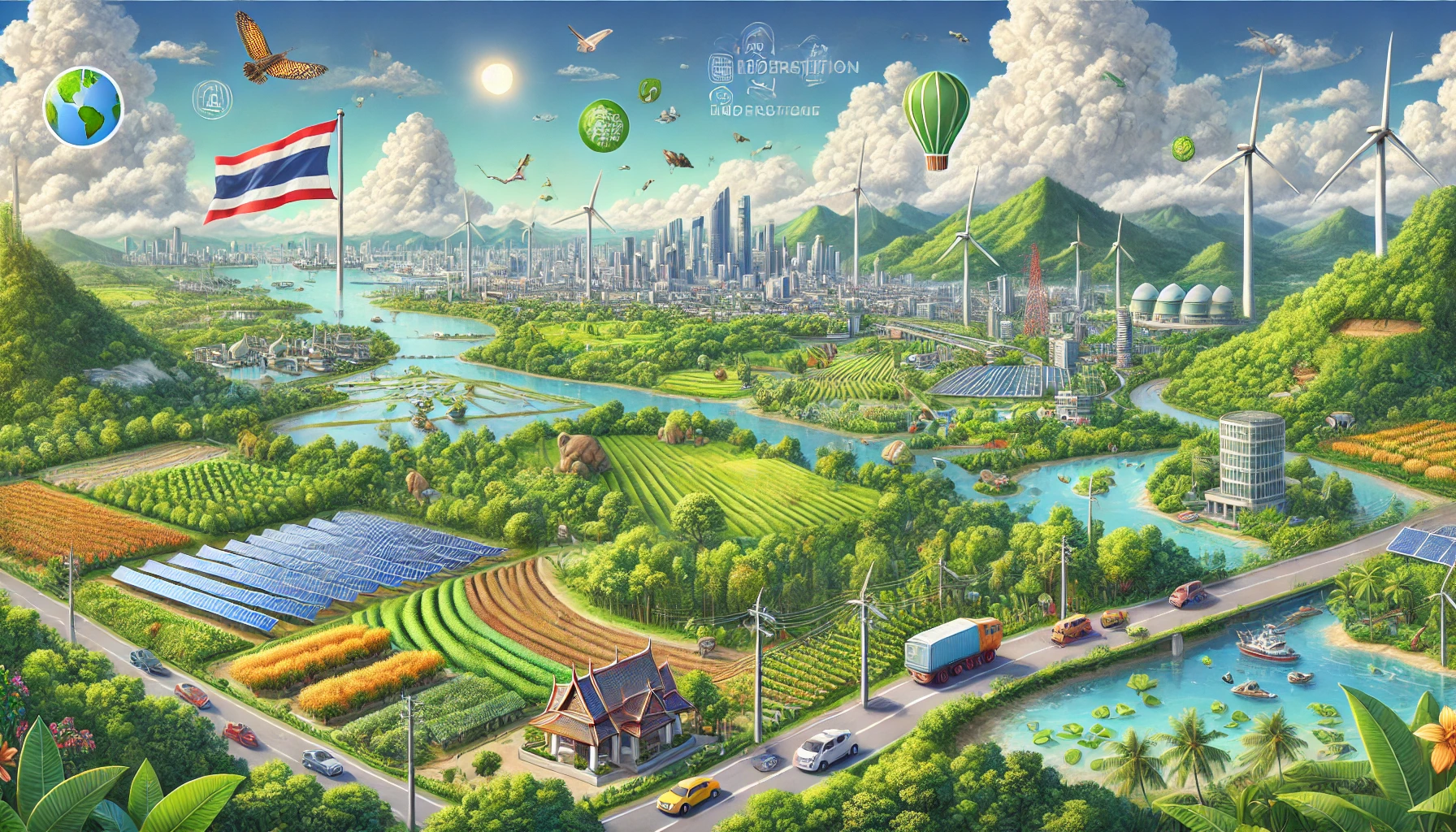Towards a Sustainable Thailand: Embracing Climate Resilience and Green Economy Models
The World Bank's report urges Thailand to adopt an enhanced Bio-Circular-Green (BCG+) model to address climate risks and economic vulnerabilities through resilience-building, carbon pricing, and a circular economy. By prioritizing sustainable practices, Thailand can safeguard its economy and environment for future growth.

- Country:
- Thailand
The recent World Bank report, authored by experts including Muthukumara Mani and Hector Pollitt, offers a comprehensive view of Thailand’s path toward sustainability with its Bio-Circular-Green (BCG) model. This model, launched in 2021, integrates bio-economy, circular economy, and green economy principles to leverage Thailand’s unique biological and cultural resources for sustainable growth. However, Thailand’s economic model is increasingly under pressure from climate-related risks, environmental degradation, and economic vulnerabilities, particularly in densely populated urban centers like Bangkok. The country’s long coastlines, rapid urbanization, and dependence on agriculture and tourism make it highly susceptible to frequent floods, droughts, and coastal erosion. Poorer households living in high-risk areas are particularly vulnerable, facing limited access to essential services. Shifting rainfall patterns and intensifying heat waves now threaten the productivity of Thailand’s agriculture sector, potentially risking billions of dollars in economic losses.
Projecting Economic Losses in a Changing Climate
Advanced modeling by the World Bank projects that, without adequate interventions, Thailand’s GDP could suffer losses of up to 2.5% by 2050, largely from impacts on agriculture, fisheries, tourism, and infrastructure. Thailand’s fishing and shrimp industries alone could face losses of up to 26.2 billion dollars due to ocean warming and ecosystem degradation. Additionally, climate change is expected to double productivity losses in agriculture and outdoor labor by mid-century, adding up to 17 billion dollars annually in labor costs to manage cooling and productivity indoors. Urban centers like Bangkok are highly exposed, with large portions of the city at risk of submersion by 2050 without improved flood defenses. The cumulative costs of floods, droughts, and heat stress pose serious threats to Thailand’s economic productivity and public health, underscoring the need for a recalibrated development model.
BCG+ Model: A Focus on Resilience and Emissions Reduction
In response to these threats, the report suggests an enhanced BCG+ model that prioritizes resilience-building and emphasizes emissions reduction. The transition to BCG+ involves tackling Thailand’s sector-specific vulnerabilities, particularly in agriculture, fisheries, tourism, and manufacturing. The agricultural sector will need to adopt climate-smart practices like efficient irrigation and crop diversification, while tourism must reduce its reliance on high-risk coastal areas. While the BCG framework is a foundation, the enhanced BCG+ model aligns with Thailand’s national priorities by integrating more rigorous climate adaptation and mitigation strategies. These adaptations, including early warning systems, flood prevention, and reinforced infrastructure, are essential yet manageable investments. For instance, flood prevention in Bangkok could reduce the GDP impacts of major flood events by up to four percentage points. While adaptation costs are projected to reach 1.6% of GDP by the 2030s, they offer substantial savings in the long run by protecting vital assets and ensuring economic stability.
Mitigation Strategies: Carbon Pricing and Electric Vehicles
The report highlights carbon pricing as an effective tool for emissions reduction, proposing a gradually increasing carbon tax across economic sectors. Although immediate impacts are limited due to Thailand’s current reliance on fossil fuels, a carbon tax would be a critical step toward transitioning to a low-carbon economy. Revenue from the carbon tax could be channeled into climate adaptation efforts, providing additional economic stability. Additionally, the transition to electric vehicles (EVs) emerges as a vital component in decarbonizing Thailand’s transportation sector. With adequate public investment, supportive policies, and international partnerships, Thailand could see EVs make up nearly 60% of new vehicle sales by 2040, contingent on expanded infrastructure for EV charging. The success of this transition will also depend on concurrent decarbonization of the power sector to maximize the environmental benefits.
Embracing a Circular Economy to Drive Growth and Job Creation
A circular economy, integral to the BCG+ model, offers significant potential for waste management and sustainable growth. By extending product lifetimes, improving waste processing, and expanding recycling across industries, the World Bank estimates that Thailand could increase its GDP by 1% by 2030, creating an estimated 160,000 jobs. The circular economy would also reduce Thailand’s dependence on imported raw materials, enhancing economic and environmental resilience. However, this transition requires both technological advances and skilled workforce development to support recycling and waste management growth effectively.
To navigate its complex ecological and economic landscape, Thailand will need a balanced approach that combines adaptation, mitigation, and systemic economic reforms. Collaborative efforts between government, private sector, and international bodies are essential to address the broad impacts of climate change and safeguard Thailand’s natural resources for future generations. By adopting the BCG+ framework, Thailand can boost its resilience to climate shocks, secure its economic future, and position itself as a sustainable development leader in Southeast Asia.
- FIRST PUBLISHED IN:
- Devdiscourse
ALSO READ
Unlocking Climate Finance: The World Bank’s Blueprint for Carbon Market Resilience
World Bank Report Urges Armenia to Prioritize Climate Action for Energy Security
Tunisia's Economic Growth Remains Slow in 2024 Despite Promising Indicators, Reports World Bank
Advancing Gender Equality Through Social Protection: World Bank's New Strategy
Global Trade Revolutionized: World Bank’s Take on Digital Port Systems









